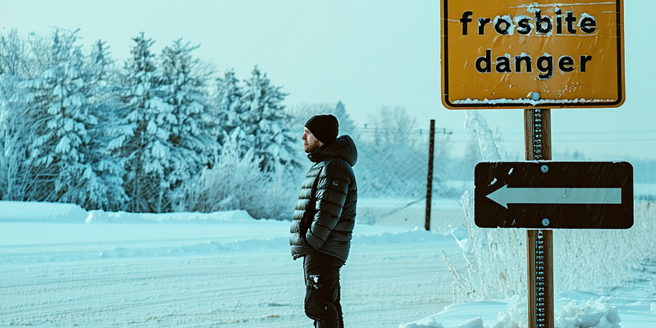
Understanding Cold-Induced Injuries
Cold-induced injuries occur when body tissues freeze due to exposure to extreme cold temperatures. The severity of these injuries can range from superficial frostnip, which affects only the outer layer of the skin, to deep frostbite, which penetrates to bones and muscles. Initially, affected areas may feel numb and appear white or pale. If untreated, frostbite can cause permanent damage or even lead to the loss of limbs. Hypothermia, another cold-induced condition, results from a dangerous drop in body temperature, leading to confusion, lack of coordination, and fatigue. It is critical to recognize the symptoms early and take protective measures, such as wearing insulated clothing and limiting exposure to cold weather, to prevent these injuries.
Immediate First Aid for Cold Injuries
Immediate first aid is vital in mitigating the effects of cold injuries. If frostbite is suspected, it is important to move out of the cold environment and begin gradual rewarming of the affected area using warm (not hot) water. Avoid using direct heat sources such as fire or heating pads, which can cause burns. Do not rub or massage the injured area, as this could cause further damage. For hypothermia, providing warmth is essential. Remove any wet clothing and cover the individual with blankets, including the head, while offering warm, non-alcoholic beverages if the person is conscious. Prompt medical attention is necessary if there are signs of severe injury, such as blisters, blackened skin, or confusion.
Medical Treatments and Interventions
Severe cases of cold-induced injuries require professional medical intervention. In many situations, early recognition and prompt action can significantly improve outcomes. In a medical setting, treatments may include rewarming techniques, such as immersion in warm water baths for frostbite or the use of intravenous warmed fluids to combat hypothermia. Pain management is also crucial, often involving the use of anti-inflammatory medications. In some cases, surgical procedures may be necessary to remove dead tissue or even amputate severely affected limbs to prevent infection. Additionally, hyperbaric oxygen therapy might be utilized to enhance tissue recovery. Doctors will also monitor for complications such as infection or renal failure, which can arise as the body responds to severe cold injuries.
Home Remedies and Supportive Care
While professional treatment is often necessary, supportive care at home can aid in recovery from mild cold injuries. Encourage circulation in the affected areas with gentle movement, and avoid direct exposure to cold until full recovery. Keeping the injured areas elevated can reduce swelling, which is particularly important in the first 48 hours. Over-the-counter pain relievers like ibuprofen or acetaminophen may help manage discomfort. If swelling persists, applying a warm compress can also provide relief. Maintaining warmth with the use of blankets and warm clothing is essential during recovery. Hydration and proper nutrition also support the healing process. Always monitor healing progress closely and consult healthcare professionals if there are signs of infection or if recovery is not progressing.
Prevention Strategies for Future Incidents
Prevention is the most effective strategy against cold-induced injuries. Dressing appropriately for cold weather, in layers of loose-fitting, insulated clothing, is crucial to retaining body heat. Pay particular attention to protecting the extremities with gloves, hats, and thermal socks. Be sure to choose equipment that is well-suited to your specific environment and activity. Avoid prolonged exposure to cold and wind, taking breaks indoors when necessary. Staying active can also help in maintaining body warmth. Stay hydrated and nourished, as this helps maintain body heat and energy levels. Educate yourself about the weather conditions and wind chill factor before outdoor activities. When traveling in cold climates, ensure you have emergency supplies, such as blankets and hand warmers, in case of unexpected delays or exposure.
